-
Dangerous mix: Climate change, tornadoes, and mobile homes
Tornadoes and mobile homes do not mix to begin with, but throw in the volatility of climate change and the potential for massive property damage and deaths is even higher in coming decades. The number of mobile homes in the United States has risen dramatically in the past 60 years, to about 9 million currently. Meanwhile, the United States is the most tornado-prone country in the world, with an average of 1,200 twisters per year.
-
-
Home styles linked to high water use
Affluent neighborhoods with lawns — and occasionally swimming pools — use up to ten times more water than neighborhoods with higher density housing with less landscaping, according to a new study. The study points to the water-saving benefits of high-density neighborhoods such as more use of hardscaping, non-vegetative landscapes, as well as native plants in landscapes, which use less water than lawns.
-
-
Trade-offs between short- and long-term policies dealing with greenhouse gases
Scientists and policymakers use measurements like global warming potential to compare how varying greenhouse gases, like carbon dioxide and methane, contribute to climate change. Yet, despite its widespread use, global warming potential fails to provide an accurate look at how greenhouse gases affect the environment in the short and long-term, according to researchers. The researchers argue that because global warming potential calculates the warming effects of greenhouse gases over 100 years, they discount the effects of any greenhouse gas that disappears from the atmosphere after a decade or two. This masks the trade-offs between short- and long-term policies at the heart of today’s political and ethical debates.
-
-
Water-repelling, long-lasting concrete could make potholes disappear
Water is concrete’s ultimate enemy. Although concrete withstands constant beatings from cars and trucks, water can break it down, pooling on its surface and infiltrating the tiniest cracks. Add freezing and thawing cycles, and it is no wonder roads need frequent repairs. To keep Mother Nature out, researchers have created a water-repelling concrete. The concrete is not only water-repellent – it isdesigned to have a service life of up to 120 years.
-
-
Natural flood-prevention measures valuable, but not “a silver bullet”
Natural measures to manage flooding from rivers can play a valuable role in flood prevention, but a lack of monitoring means their true potential remains unclear, researchers say. Such measures, including river restoration and tree planting, aim to restore processes that have been affected by human activities such as farming, land management and house-building.
-
-
Louisiana’s westernmost, low-lying regions on track to drown under sea level rise
Without major efforts to rebuild Louisiana’s wetlands, which serve as bulwarks against waves and rising seas, the state’s coast has little chance of withstanding the accelerating rate of sea level rise, a new study concludes. Wetlands can provide crucial protection from rising seas, especially in Louisiana’s low-lying westernmost areas, but the habitats have faced years of decline, mostly from coastal erosion. The erosion results in part from levees that have been built along the Mississippi River. The levees block mud deposits that flow to and underlie much of the Louisiana coast. The land, cut off from new building material, begins to sink.
-
-
Desert communities and the search for hidden water
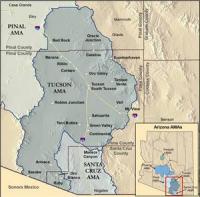
In the 1800s, cowboys, ranchers, and miners quarreled over water in the American Southwest, over where to find it, and who could use it. Today, desert communities throughout the Southwest are still putting water availability at the top of their municipal agendas. one area stands out from the rest: the upper Santa Cruz Basin in Arizona has shown a remarkable capacity to store water. What causes the higher water availability in this area?
-
-
Risk of collapse: U.S. bridges more vulnerable than previously thought
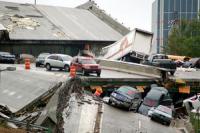
The United States is considering a $1 trillion budget proposal to update infrastructure, including its crumbling bridges. An obstacle to spending the money wisely is that the current means of assessing bridges may underestimate their vulnerability. Studying how and why bridges have collapsed in the past identifies the limitation of current risk assessment approach and demonstrates the value of new perspectives on climate change impact.
-
-
Extreme space weather hazardous to U.S. economy, national security

While major geomagnetic storms are rare, with only a few recorded per century, there is significant potential for large-scale impacts when they do occur. Extreme space weather can be viewed as hazards for the economy and national security. A rare but powerful magnetic superstorm could cause continent-wide loss of electricity and substantial damage to power-grid infrastructure that could persist for months and cost the Nation in excess of $1 trillion.
-
-
“Spectral fingerprinting” sees through concrete to detect early corrosion
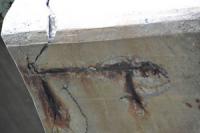
Doctors use X-ray, CT scan, or MRI to determine whether a patient has suffered any internal injuries. Researchers are using the same principle, but in a more powerful form, to detect corrosion, the primary danger threatening the health of the steel framework within the nation’s bridges, roads, and other aging physical infrastructure. What they have developed is a noninvasive “spectral fingerprint” technique that reveals the corrosion of concrete-encased steel before it can cause any significant degradation of the structure it supports.
-
-
Testing seismic resilience of laminated wood structures in earthquake-prone areas
Researchers are developing guidelines that will help builders use more sustainable timber in high-rise buildings in earthquake-prone areas. As part of the $1.5 million National Science Foundation grant, the researchers will eventually test their designs for a 10-story tall, wooden building by simulating a real earthquake in a laboratory.
-
-
Western U.S.: Loss in water from melting snowpack due to human influence
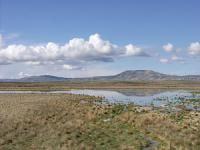
Peak runoff in streams and rivers of the western United States is strongly influenced by melting of accumulated mountain snowpack. A significant decline in this resource has a direct connection to streamflow, with substantial economic and societal impacts. An international team of scientists has found that up to 20 percent loss in the annual maximum amount of water contained in the western United States’ mountain snowpack in the last three decades is due to human influence.
-
-
New filtration method makes water safe to drink
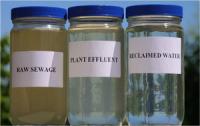
Researchers have created a membrane that removes viruses from treated wastewater and makes it safe for drinking. The new ultrafiltration method does not rely on chlorine, the commonly used chemical to purify water, which can cause contamination.
-
-
BP oil spill did $17.2 billion in damage to natural resources

The 2010 BP Deepwater Horizon oil spill did $17.2 billion in damage to the natural resources in the Gulf of Mexico, a team of scientists recently found after a six-year study of the impact of the largest oil spill in U.S. history. This is the first comprehensive appraisal of the financial value of the natural resources damaged by the 134-million-gallon spill.
-
-
Clean power planning
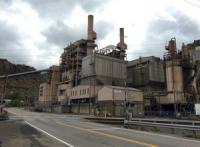
With a single executive order issued at the end of March, the Trump administration launched a robust effort to roll back Obama-era climate policies designed to reduce U.S. carbon dioxide (CO2) emissions. Chief among those policies is the Clean Power Plan, which targets coal and natural gas-fired electric power plants that account for about 40 percent of the nation’s CO2 emissions. Private and public-sector investors may see the executive order as a green light to double down on relatively cheap fossil fuels and reduce holdings in more costly, climate-friendly, non-carbon generation technologies such as wind, solar and nuclear. But they may want to think twice before making such transactions – and a new study details why it’s prudent to invest in carbon-free electricity now.
-
- All
- Regional
- Water
- Biometrics
- Borders/Immig
- Business
- Cybersecurity
- Detection
- Disasters
- Government
- Infrastructure
- International
- Public health
- Public Safety
- Communication interoperabillity
- Emergency services
- Emergency medical services
- Fire
- First response
- IEDs
- Law Enforcement
- Law Enforcement Technology
- Military technology
- Nonlethal weapons
- Nuclear weapons
- Personal protection equipment
- Police
- Notification /alert systems
- Situational awareness
- Weapons systems
- Sci-Tech
- Sector Reports
- Surveillance
- Transportation
Advertising & Marketing: advertise@newswirepubs.com
Editorial: editor@newswirepubs.com
General: info@newswirepubs.com
2010-2011 © News Wire Publications, LLC News Wire Publications, LLC
220 Old Country Road | Suite 200 | Mineola | New York | 11501
Permissions and Policies
Editorial: editor@newswirepubs.com
General: info@newswirepubs.com
2010-2011 © News Wire Publications, LLC News Wire Publications, LLC
220 Old Country Road | Suite 200 | Mineola | New York | 11501
Permissions and Policies
